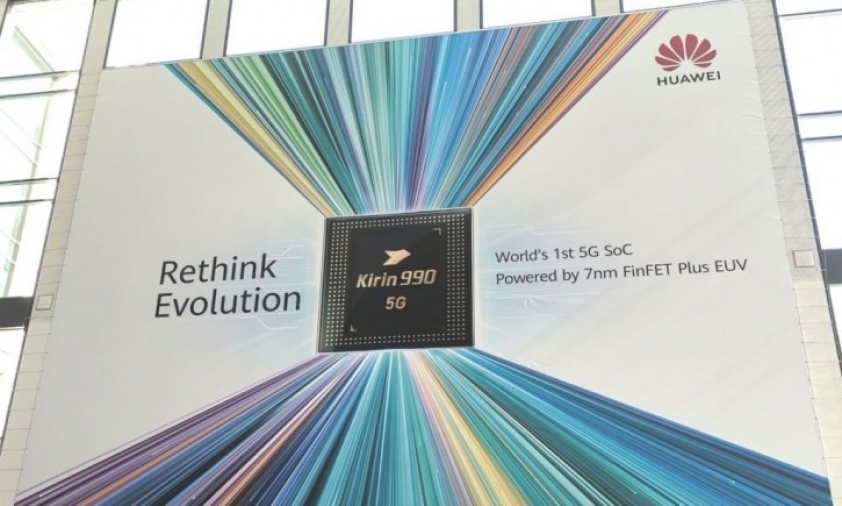 The poster unveiling HiSilicon Kirin 990 with its 5G feature by Huawei. (Image via GSMArena.com)
The poster unveiling HiSilicon Kirin 990 with its 5G feature by Huawei. (Image via GSMArena.com)
HiSilicon Kirin 990, a kryptonite for Apple's iPhone 11
Huawei knows how to beat its opponent. Last year at IFA 2018 in Berlin, the Chinese tech giant unveiled the world’s first revolutionary 7nm chip, just a few days before Apple also announced the same chip that powered its 2018’s iPhone series.At IFA 2019 in Berlin, Huawei did exactly the same. The difference was this time Apple could not keep up with it. During the exhibition, Huawei unveiled a new processor that will be implanted within its next-gen smartphones, HiSilicon Kirin 990 System-on-Chip (SoC).
Kirin 990 is produced with extreme ultraviolet lithography and consists of 10.3 billion transistors, compared to its predecessor, Kirin 980, which only had 6.9 billion transistors.
Kirin 990 consists of 8-core CPU, two ultra-large cores, two large cores, and four small cores. Also, it included 16-core Mali-G76 GPU with an all-new “Smart Cache” system which was rumored to save bandwidth and also battery! Good news for the gamers, Kirin Gaming+ 2.0 is also included in the SoC which means more surreal gaming experience than ever was.
Knowing that Apple would probably rely mostly on photo features, Huawei learned to use this against it too. Kirin 990 is equipped with ISP 5.0 chip which supports block-matching, 3D rendering, and noise reduction to capture pictures in low lights with the best quality.
Apple’s iPhone 11 came with the A13 chip, while the display of Kirin 990 in Huawei’s Mate 30 needs to wait until 19 September when Mate 30 series will be finally revealed. It is like 2018 all over again.
However, Huawei ensured that the competition would be in their favor. Why? Kirin 990 has something that A13 does not have: 5G. Huawei, as the leading 5G developers, utilizes its Balong 5000 resulting in download and upload speeds of up to 2.3Gbit/s and 1.25Gbit/s at maximum. However, judging that most regions still don’t have access to the 5G network yet, Huawei also introduced the 4G-version of the chipset.
So, does this mean Apple already lose the competition? Not necessarily. Apple stated that it would not hurry the 5G connectivity, saving until 2020. Besides, Apple would choose Qualcomm’s chipset. Qualcomm also provided 5G modems for Android phones released this year.
Source: https://bgr.com/2019/09/06/mate-30-pro-specs-vs-iphone-11-7nm-kirin-990-5g-chip-is-now-official/
 English
English Japan
Japan
